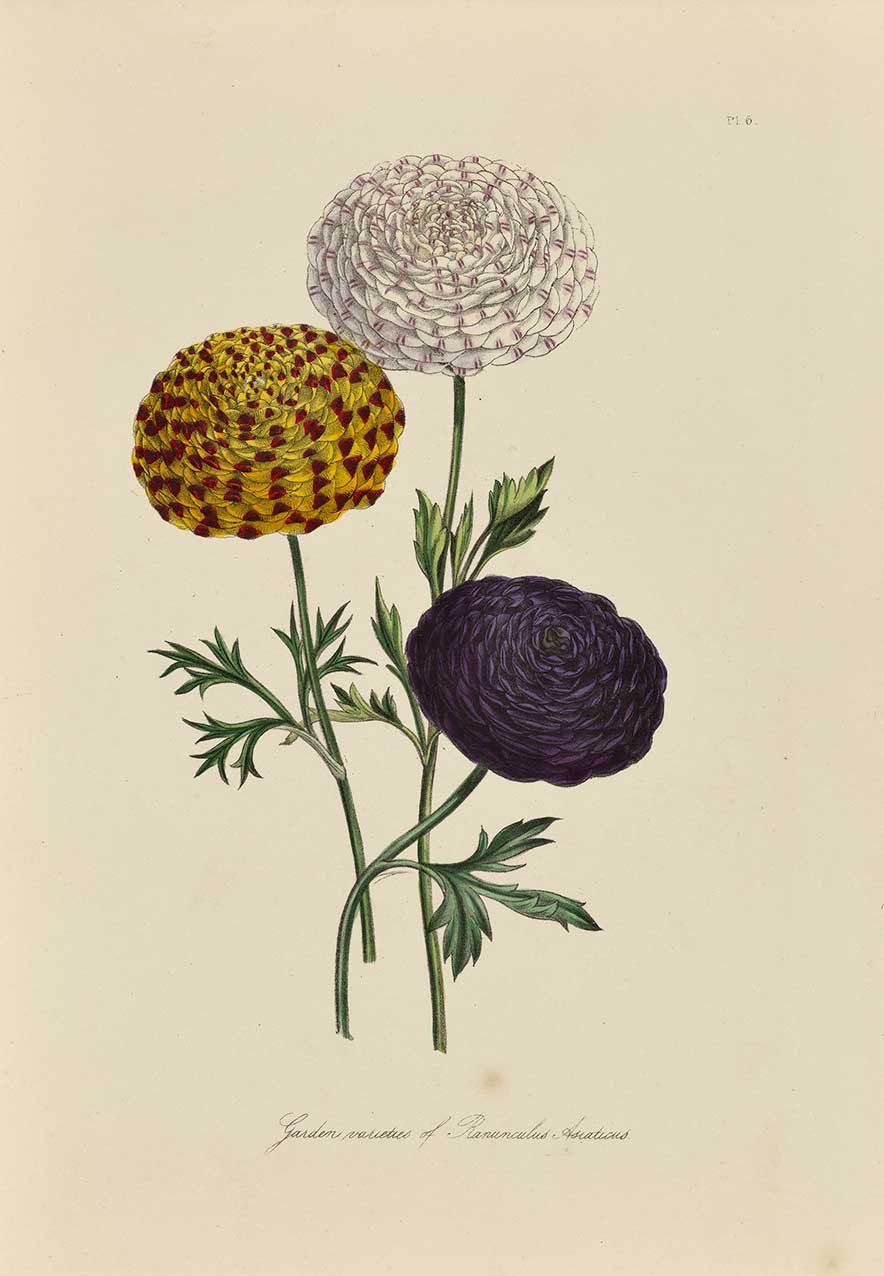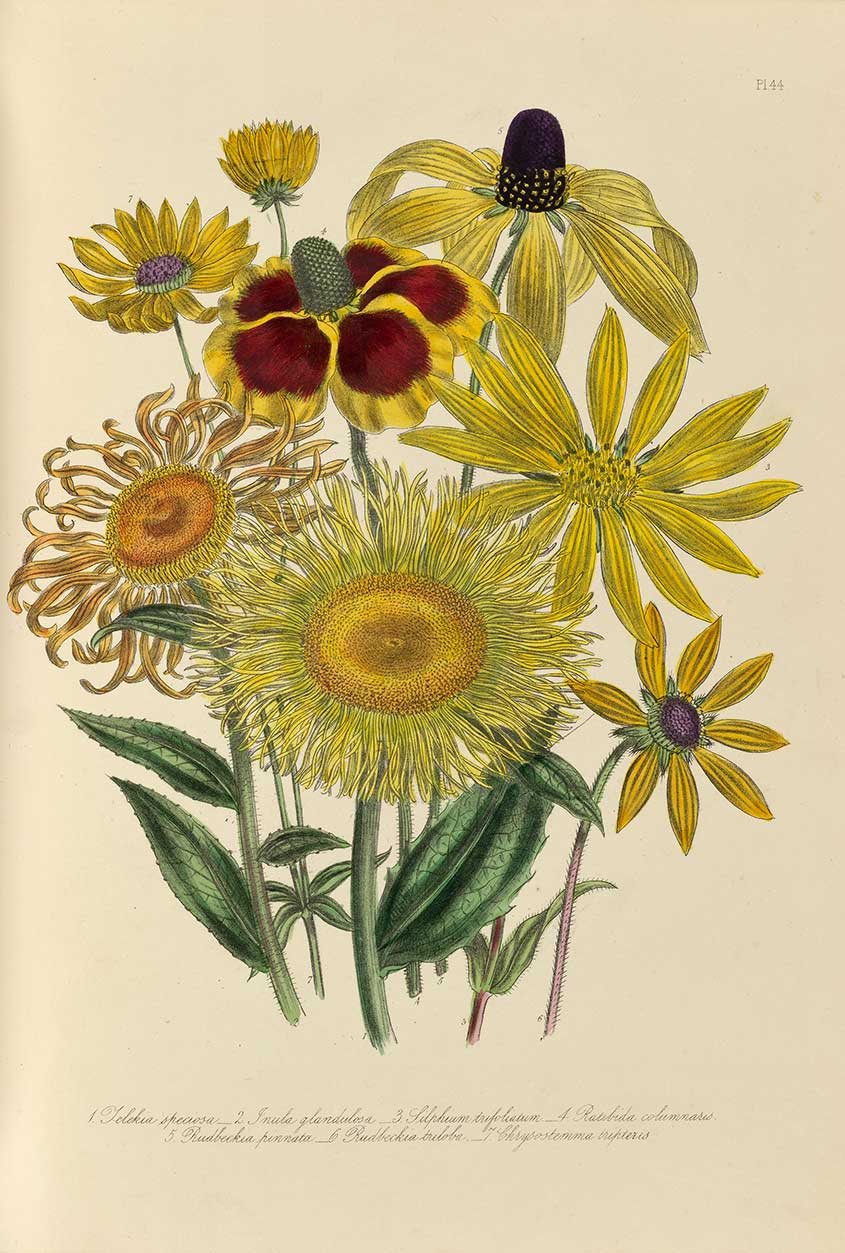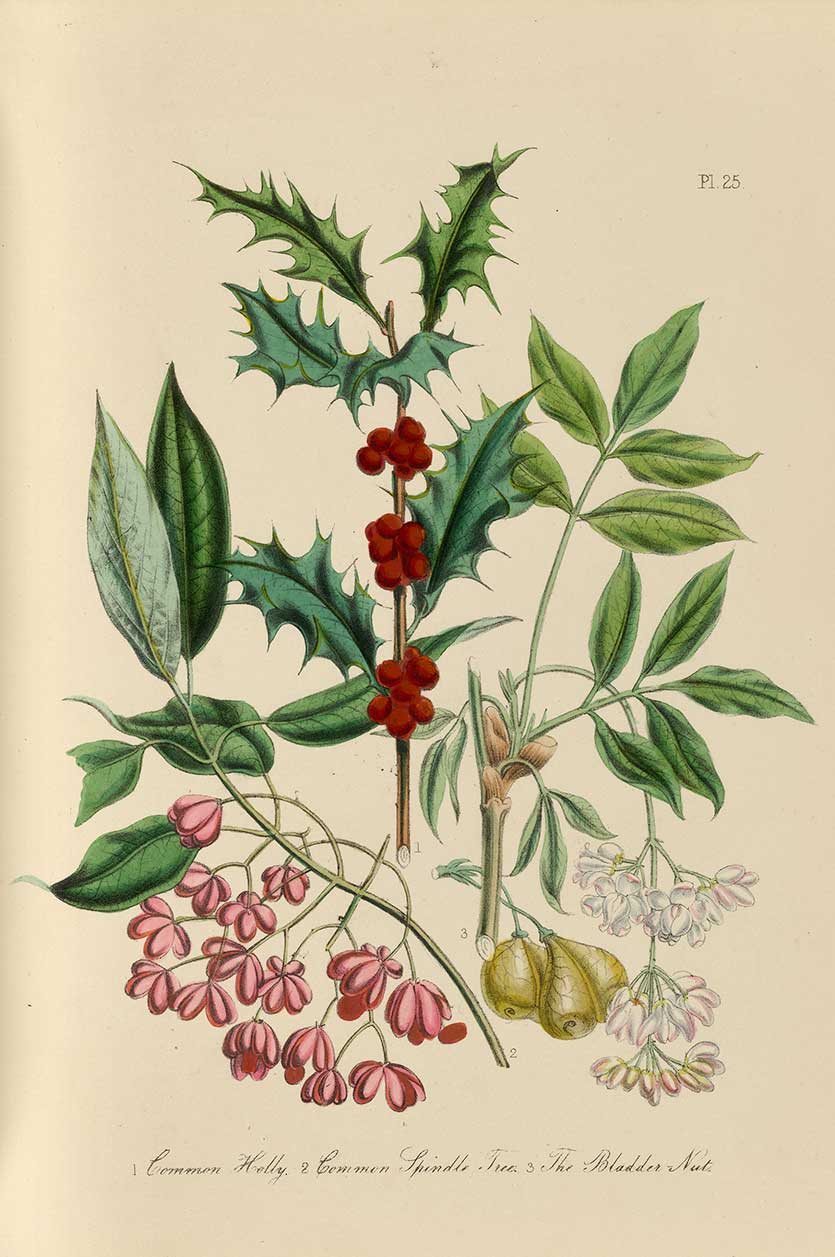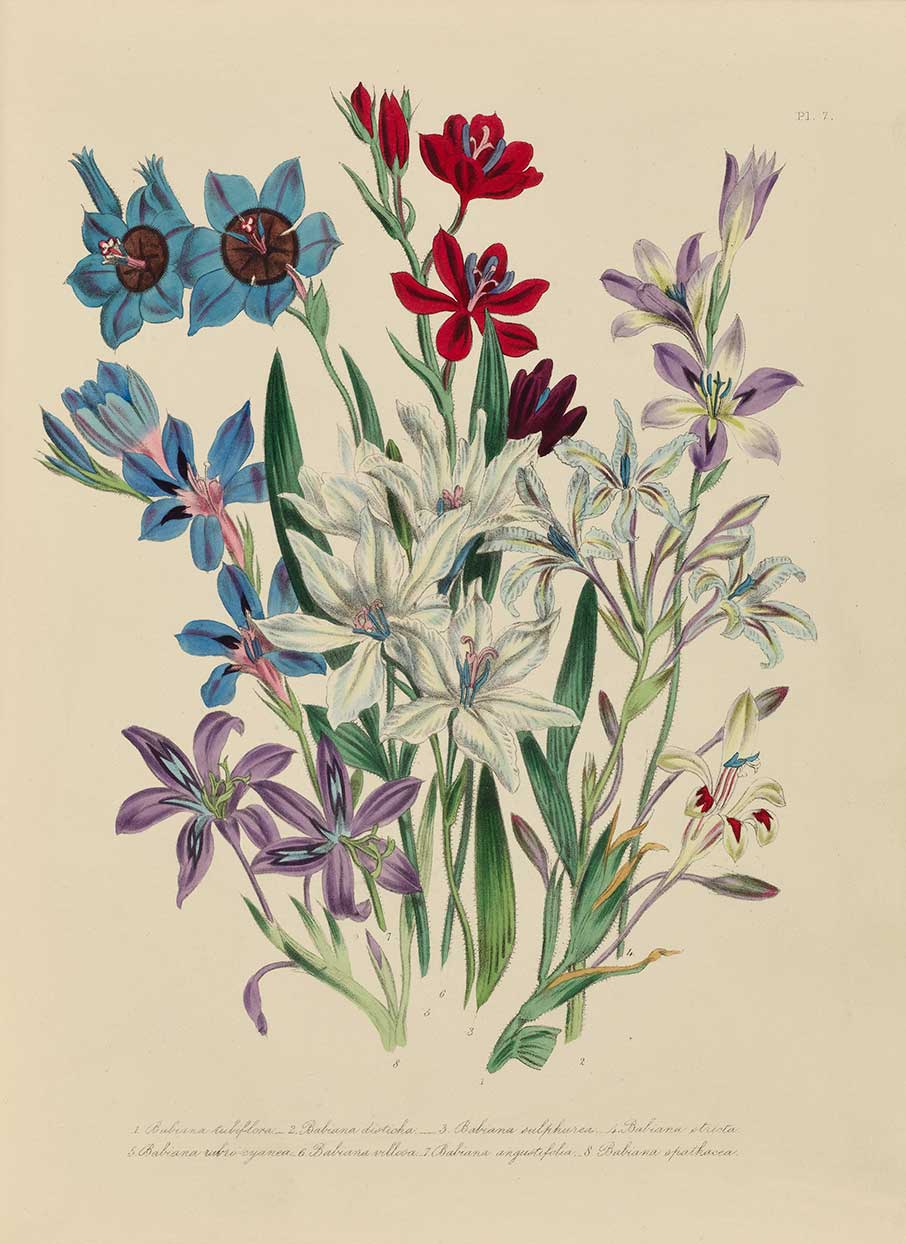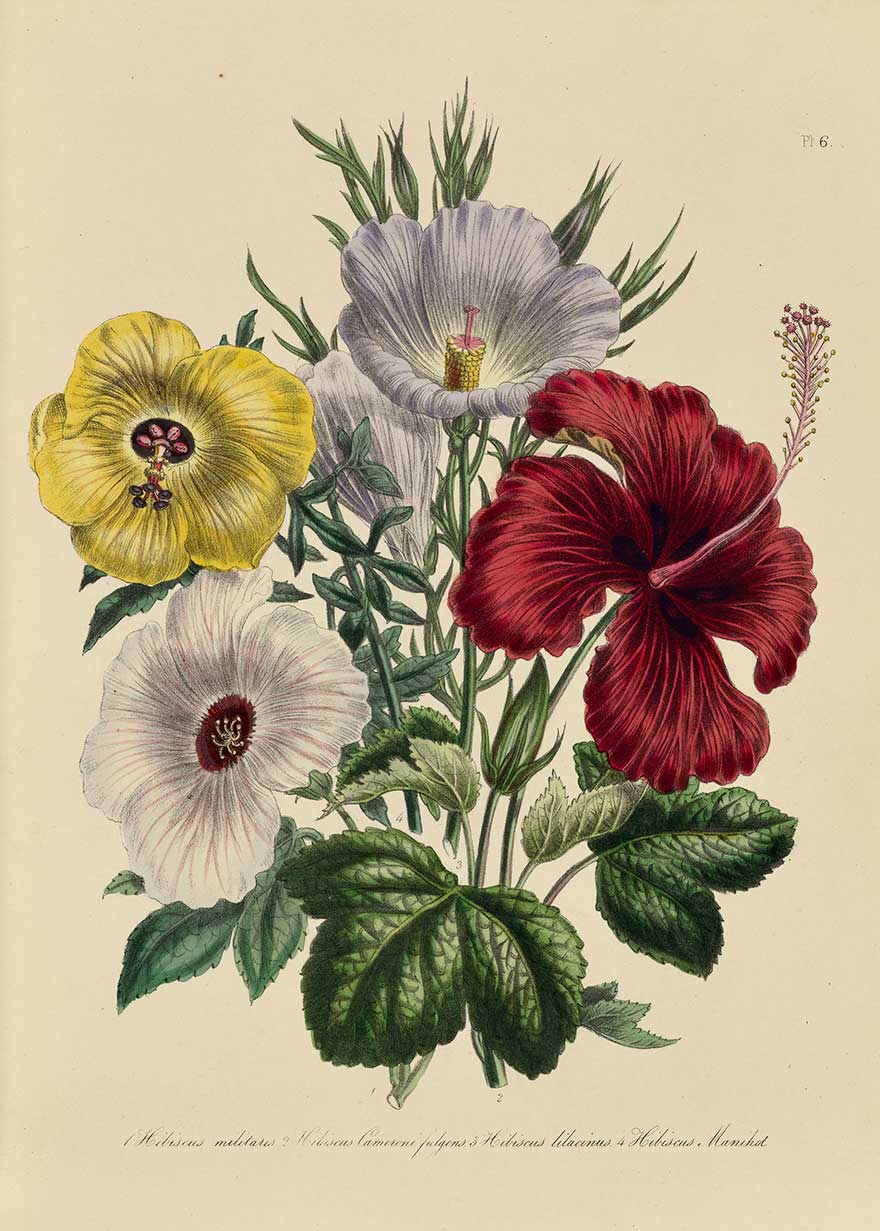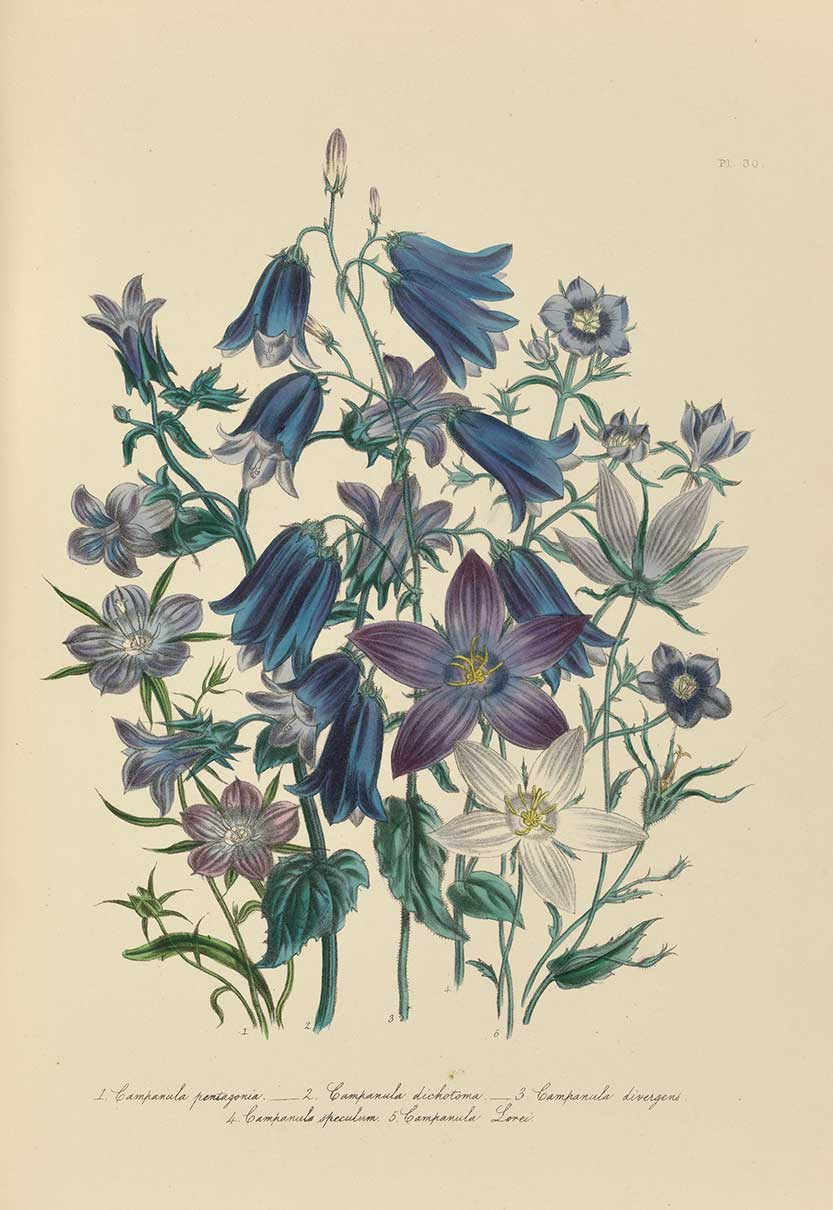Jane Loudon
OSGF
The Oak Spring Garden Library houses the works of many great women artists in its collection -- most of whom were ahead of their time in one way or another. One of these women, Jane Loudon (1807-1858), revolutionized both science fiction literature and the art of gardening by making it accessible to amateurs and women. The Oak Spring Garden Library has six second-edition volumes of her most successful work, The Ladies' Flower-Garden.
John Claudius Loudon loved the fantastical. He was a Scottish botanist, designer and garden magazine editor -- but above all, he was inspired innovation.
In 1829 he published an article in his Gardeners Magazine about a book he had read that captured his imagination -- The Mummy!: Or a Tale of the Twenty-Second Century. This pioneering novel was an early work of science fiction, set in the year 2126, that imagined a future Britain with an absolute matriarchal monarchy, steam-powered automatons and a form of “internet” that used cannonballs for instantaneous communication. The clever steam plough device mentioned in the book was so radical, John thought, that he must meet the mind behind it. Of course, this was a decade before John Deere invented the steam plough. He had a friend arrange a lunch with the anonymous author of the book, and the person he met changed his life and the art of gardening forever.
Jane Webb was born into moderate wealth near Birmingham, England on August 19th, 1807. Her early life was marred by sorrow and adventure. The untimely death of her mother when Jane was 12 years old prompted her and her father to travel Europe. Jane quickly learned several languages and grew more worldly, but shortly after their return to England, her father's business suffered and his wealth evaporated. He died penniless in 1824, only five years after the death of his wife. Jane turned to writing to get by. She imagined an egalitarian future Britain with fantastical inventions like steam ploughs and cannonball communication. She put these imaginings in a book, The Mummy!, which she published anonymously in 1827 at the age of twenty. Jane was the author that met John Loudon at that lunch. She later wrote “It may easily be supposed that he was surprised to find the author of the book a woman,” but John Claudius Loudon loved the fantastical, and fell in love with Jane. Seven months after their meeting, the two married.
They settled into life together, had a daughter, and grew to collaborate in their work. Jane learned gardening by attending lectures and helping John tend to his botany. At the time, gardening was largely a scientific endeavor, which meant that gardening manuals were targeted at scholars and men. Jane saw the opportunity.
With the support of John, including his background in gardens and publishing, Jane began writing popular manuals -- handbooks that would allow amateurs and hobbyists to learn and grow in the art of gardening. Particularly, she thought, these books would re-frame gardening as a practice fit for women. As a self-taught artist and a forward thinker, Jane illustrated her books using the new technique of chromolithography, and in 1838 she published the Young Lady's Book of Botany. This was soon followed in 1840 with The Ladies' Flower-Garden of Ornamental Annuals, which she turned into a series with volumes on greenhouse plants, bulbous plants and perennials. She published more books over the following years -- all with the goal of accuracy and accessibility in mind.
Her books were a hit, selling tens of thousands of copies over a decade. But John's work was expensive and they ran into financial trouble. John's wealth shriveled and his health declined until, in 1843 at the age of 60, John Loudon died. Jane was left impoverished and widowed. She pushed on in her work, taking a job as editor of The Ladies' Companion at Home and Abroad and continuing to publish books. But her success wilted when she lost that job at the same time that her book sales began to dry up. In 1858 at the age of 51, with almost no money, Jane Loudon died.
In her lifetime, Jane had seen joy and sorrow, fortune and poverty. But she had planted something that has grown to flourish two centuries later. She had loved the fantastical and imagined a future with women leaders and automated ploughs. She imagined a world where anyone, no matter their gender or education, could pick up a trowel and spring beauty from the dirt.



